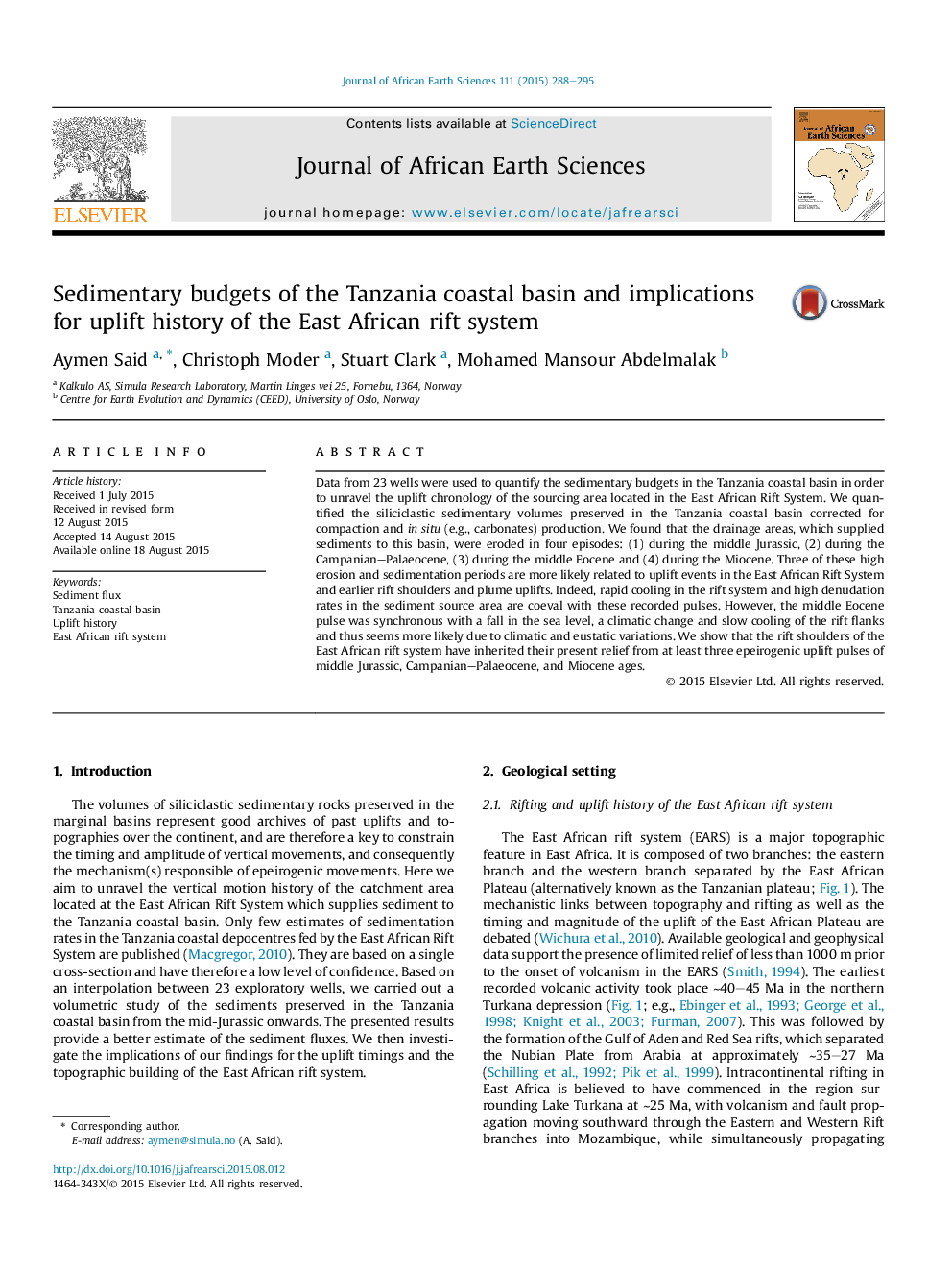| Article ID | Journal | Published Year | Pages | File Type |
|---|---|---|---|---|
| 4728503 | Journal of African Earth Sciences | 2015 | 8 Pages |
•Sedimentary budgets in the Tanzania coastal basin.•Uplift history of the East African Rift System.•Four periods of high sediment fluxes mainly caused by tectonic uplift events.•The middle Eocene high sedimentation is likely related to eustatic and climatic factors.
Data from 23 wells were used to quantify the sedimentary budgets in the Tanzania coastal basin in order to unravel the uplift chronology of the sourcing area located in the East African Rift System. We quantified the siliciclastic sedimentary volumes preserved in the Tanzania coastal basin corrected for compaction and in situ (e.g., carbonates) production. We found that the drainage areas, which supplied sediments to this basin, were eroded in four episodes: (1) during the middle Jurassic, (2) during the Campanian–Palaeocene, (3) during the middle Eocene and (4) during the Miocene. Three of these high erosion and sedimentation periods are more likely related to uplift events in the East African Rift System and earlier rift shoulders and plume uplifts. Indeed, rapid cooling in the rift system and high denudation rates in the sediment source area are coeval with these recorded pulses. However, the middle Eocene pulse was synchronous with a fall in the sea level, a climatic change and slow cooling of the rift flanks and thus seems more likely due to climatic and eustatic variations. We show that the rift shoulders of the East African rift system have inherited their present relief from at least three epeirogenic uplift pulses of middle Jurassic, Campanian–Palaeocene, and Miocene ages.
